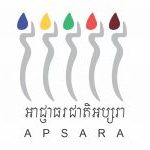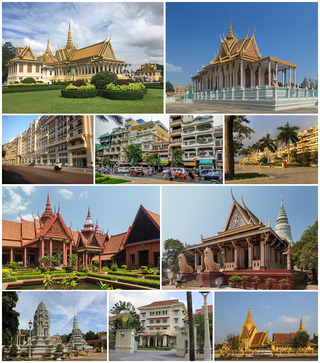
Phnom Penh is the capital and most populous city of Cambodia. It has been the national capital since the French protectorate of Cambodia and has grown to become the nation's primate city and its economic, industrial, and cultural centre.
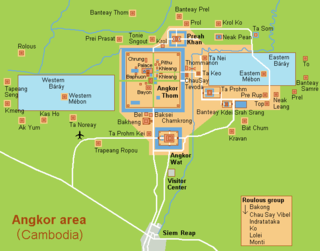
Angkor, also known as Yasodharapura, was the capital city of the Khmer Empire. The city and empire flourished from approximately the 9th to the 15th centuries. The city houses the Angkor Wat, one of Cambodia's most popular tourist attractions.

Angkor Wat is a temple complex in Cambodia, located on a site measuring 162.6 hectares. The Guinness World Records considers it as the largest religious structure in the world. Originally constructed as a Hindu temple dedicated to the god Vishnu for the Khmer Empire by King Suryavarman II during the 12th century, it was gradually transformed into a Buddhist temple towards the end of the century; as such, it is also described as a "Hindu-Buddhist" temple.

The German Apsara Conservation Project (GACP) is a non-profit organisation based at the University of Applied Sciences, Cologne dedicated to preserving the devatas and other bas-reliefs of Angkor Wat. It is funded primarily by the German Foreign Office.

Kbal Spean is an Angkorian-era archaeological site on the southwest slopes of the Kulen Hills to the northeast of Angkor in Banteay Srei District, Siem Reap Province, Cambodia. It is situated along a 150m stretch of the Stung Kbal Spean River, 25 kilometres (16 mi) from the main Angkor group of monuments, which lie downstream.
An Apsara is a female spirit from Hindu and Buddhist mythology.

Siem Reap is the second-largest city of Cambodia, as well as the capital and largest city of Siem Reap Province in northwestern Cambodia.
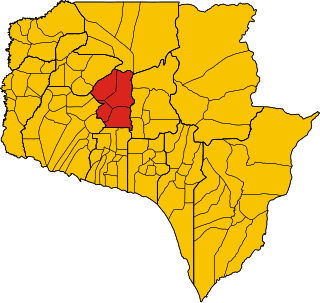
Angkor Thom is an administrative district of Siem Reap province, in north western Cambodia. According to the 1998 census of Cambodia, it had a population of 17,750.
Angkor University (សាកលវិទ្យាល័យអង្គរ) is a higher education and research institution in Siem Reap Province, Cambodia.

Kampong Phluk is a commune in Prasat Bakong District in Siem Reap Province Cambodia. The name means "Harbor of the Tusks". The community largely depends on fishing for survival, primarily shrimp, spending Cambodia's wet season (May-October) fishing.
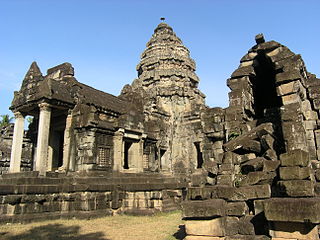
Wat Althea, also called Prasat Vat Althea, is a 12th-century Hindu temple at Angkor, Cambodia with an active Buddhist temple and cemetery adjacent to the walled ancient structure.

Artisans Angkor is a Cambodian social business creating job opportunities for young people in rural areas, while reviving traditional Khmer craftsmanship.

Tourism in Cambodia is one of the most important sectors in the country's economy. In 2013, tourism arrivals increased by 17.5 percent year on year, with business travelers increasing 47 percent.

Angkor National Museum is an archaeological museum dedicated to the collection, preservation and presentation of Angkorian artifacts, also to provides information and education about art and culture of Khmer civilization, with collections mainly dated from Khmer Empire's Angkor period circa 9th to 14th-century. Most of the artifacts are discovered in and around the Angkor archaeological sites nearby. The museum is located in Siem Reap, Cambodia, on the way between downtown Siem Reap to northern road leading to Angkor ancient city.
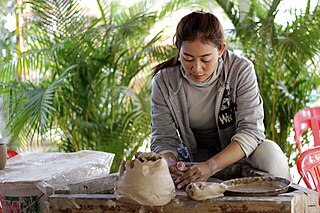
The Khmer Ceramics & Fine Arts Centre, formerly known as the National Centre for Khmer Ceramics Revival (NCKCR), is an organization aiming to rediscover and reintroduce Khmer ancestral pottery techniques and support the development of contemporary Khmer ceramics art. In the process, the centre creates economic opportunities, helping to decrease poverty in Cambodia. It is located in Siem Reap.
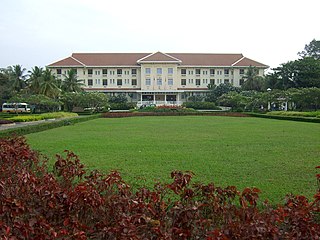
Raffles Grand Hotel d'Angkor is a historic hotel located in Siem Reap, Cambodia. First opened in 1932, it was established by French town planner Ernest Hébrard to accommodate the early explorers and tourists visiting the world heritage site of Angkor Wat.
Lok Oknha Sok Kong is a Khmer businessman and founder of Sokimex, a company based in Cambodia. He is considered among Cambodia's two "most successful entrepreneurs" along with Kith Meng.

Malis is a Cambodian restaurant opened in 2004 in Phnom Penh, the first Cambodian fine dining restaurant in the city. To design the restaurant's menu chef Luu Meng travelled throughout Cambodia for six months and collected traditional recipes, which he presented using farm-sourced ingredients and modern cooking techniques. In 2011 Malis won the Tourism Alliance Award as the Restaurant of the Year at the International Travel Expo in Ho Chi Minh City.

The Preah Norodom Sihanouk-Angkor Museum is a museum located in Siem Reap, Cambodia. The museum is dedicated to displaying exhibits on the history of Cambodia's civilization through various cultural and archaeological artifacts.
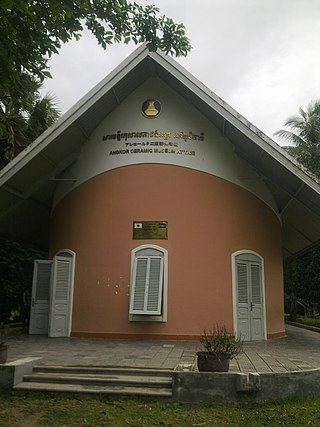
The Angkor Ceramic Museum at Tani is a museum located in Tani Village, Siem Reap, Cambodia. In 1990s, researchers have discovered some locations of Khmer ancient kiln in Angkor area. Excavation on the furnace structure, the process of ancient kiln and Khmer ceramics in Tani village began in 1996.
Angkor Ceramic Museum at Tani is the first museum in Cambodia to be built on an archaeological site and opened in 2009. This museum provides important information about the daily life, trade, development of handicrafts and Khmer ceramics of ancestors during the Angkor period.
